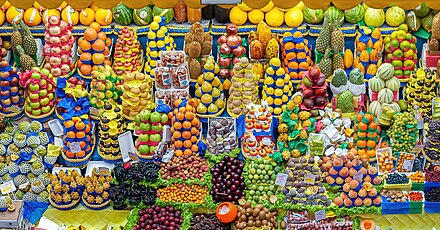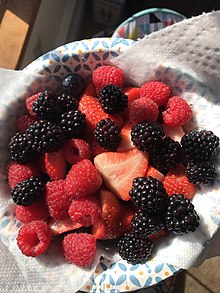**Botanical vs. Culinary Classification**:
– In botany, fruits are ripened ovaries or carpels containing seeds.
– Nuts are a type of fruit, not a seed.
– Culinary fruits are sweet or sour produce like peaches and pears.
– Nuts are hard, oily, non-sweet plant produce.
– Vegetables are typically savory or non-sweet produce.
**Fruit Structure**:
– The outer layer of fruits is called the pericarp, consisting of epicarp, mesocarp, and endocarp.
– Some fruits have differentiated pericarp layers like exocarp, mesocarp, and endocarp.
– Fruits with a pointed terminal projection are beaked.
– Sepals, petals, stamens, and style may fall away as fruits ripen.
**Fruit Development**:
– Fruits result from fertilizing and maturing flowers.
– Ovules are fertilized through pollination.
– Double fertilization process involves zygote and endosperm formation.
– Fleshy or hard pericarp forms as ovules develop into seeds.
– Some fruits are accessory fruits due to floral parts contributing to fruit structure.
**Classification of Fruits**:
– Fruits are classified as simple, aggregate, or multiple fruits.
– Simple fruits develop from a single flower.
– Aggregate fruits form from multiple pistils in one flower.
– Multiple fruits come from an inflorescence of flowers.
– Classification is based on ovary arrangement and fruit development, not evolution.
**Uses and Benefits of Fruits**:
– Fruits like apples, berries, coconuts, strawberries, and pineapples are commercially valuable for human consumption.
– Proper post-harvest care is essential for all fruits, with ethylene causing ripening in many.
– Fresh fruits vary in fiber, potassium, and vitamin C content.
– CDC recommends proper fruit handling and preparation to reduce foodborne illness risks.
– Fruits have nutritional value, promote satiety, and are linked to reduced risks of diseases and functional declines with age.
In botany, a fruit is the seed-bearing structure in flowering plants that is formed from the ovary after flowering (see Fruit anatomy).


Fruits are the means by which flowering plants (also known as angiosperms) disseminate their seeds. Edible fruits in particular have long propagated using the movements of humans and other animals in a symbiotic relationship that is the means for seed dispersal for the one group and nutrition for the other; humans and many other animals have become dependent on fruits as a source of food. Consequently, fruits account for a substantial fraction of the world's agricultural output, and some (such as the apple and the pomegranate) have acquired extensive cultural and symbolic meanings.
In common language usage, fruit normally means the seed-associated fleshy structures (or produce) of plants that typically are sweet or sour and edible in the raw state, such as apples, bananas, grapes, lemons, oranges, and strawberries. In botanical usage, the term fruit also includes many structures that are not commonly called 'fruits' in everyday language, such as nuts, bean pods, corn kernels, tomatoes, and wheat grains.
